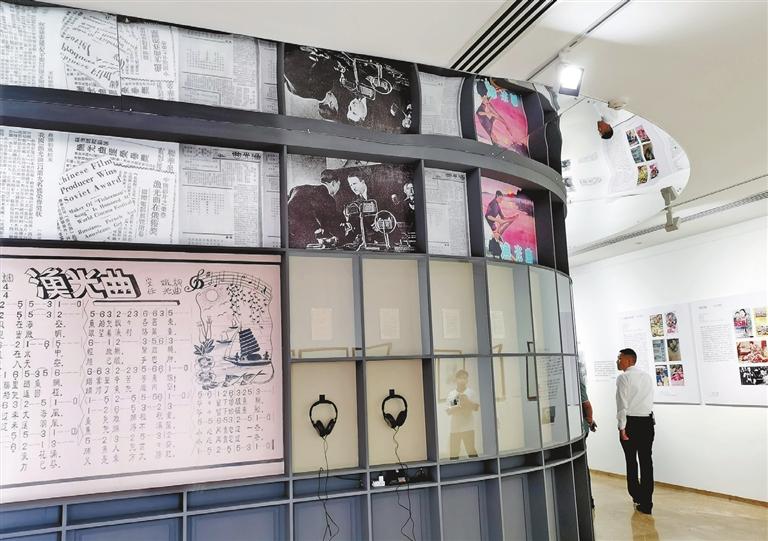
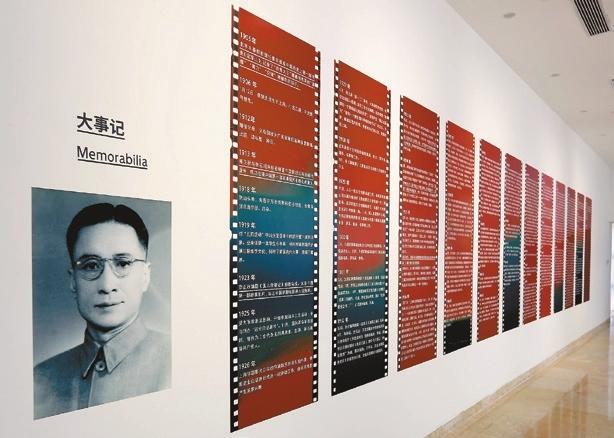
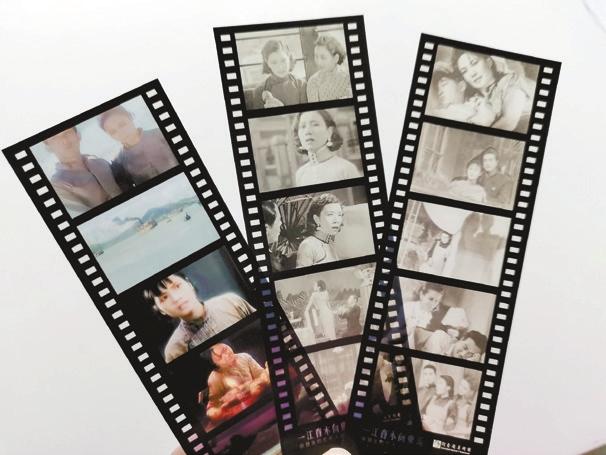
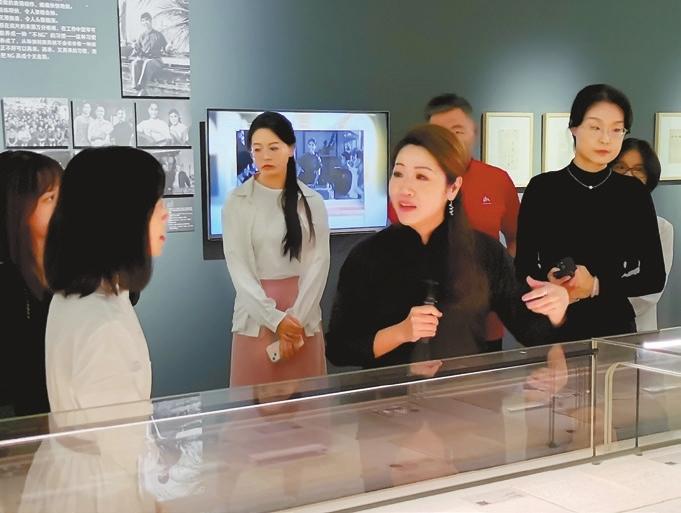
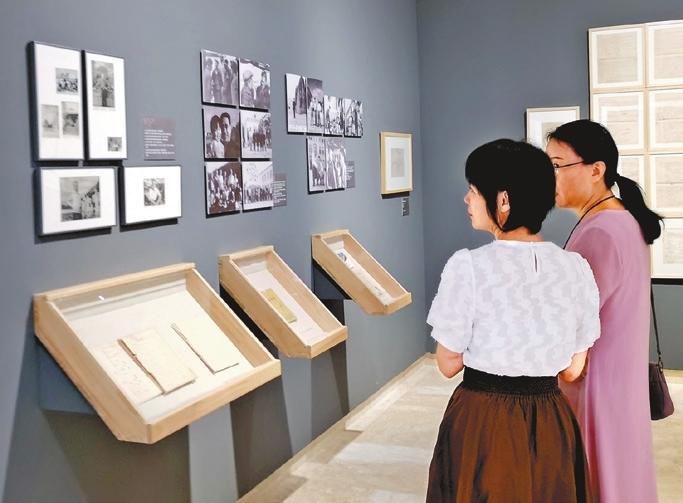
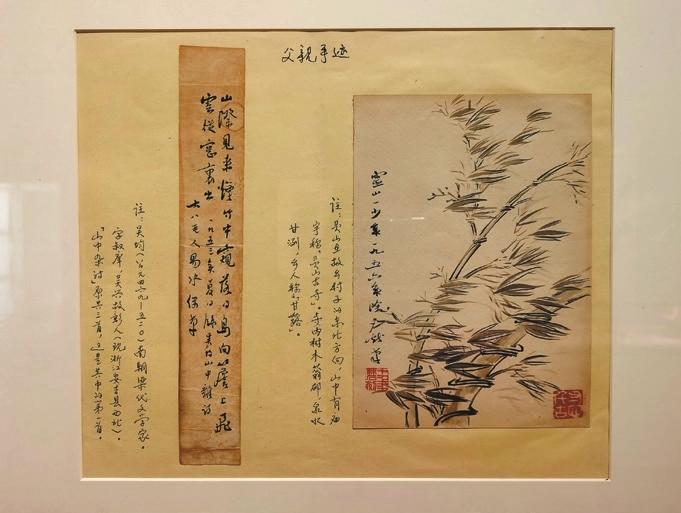
Cao Zhen caozhen0806@126.com OLD Chinese films created in the early 20th century hold a unique charm and nostalgic aura. This charm may arise from the vintage aesthetics, the warmth of storytelling in a bygone era, and the memorable performances by stars such as Ruan Lingyu, Zhou Xuan and Zheng Junli. However, it is the talented filmmakers who created the classic cinematic experiences that are more notable. A new exhibition at the He Xiangning Art Museum, titled “The Spring River Flows East: The Artistic Life of Cai Chusheng,” is a remarkable tribute to Cai Chusheng (1906-1968), a visionary master whose films continue to inspire the audience today. The exhibition offers a comprehensive exploration of Cai’s movies and artistic journey through over 700 exhibits. According to Cheng Bin, deputy director of the art museum, the exhibition is the result of in-depth research into Cai’s films, manuscripts, work diaries and other documents. Through this academic analysis, the exhibition provides a valuable perspective on Cai’s visual artistry, artistic ideas and academic contributions, highlighting his significant role in China’s film development. It also seeks to delve into the profound cultural awareness and cultural self-confidence. As a pioneer in Chinese progressive cinema and founder of Chinese realism cinema, Cai not only created such milestone films as “Song of the Fishermen” (1934), “New Women” (1935), “The Spring River Flows East” (1947) and “Waves on the South China Sea” (1963), but also garnered international acclaim. In Georges Sadoul’s “Histoire du Cinéma Mondial,” the French film historian selected 200 influential film artists of the 20th century, of whom Cai was the only Chinese. Cai’s directorial debut, “Song of the Fishermen,” received the Honorary Award at the Moscow Film Festival in 1935, becoming the first Chinese film to win an international award. Cai authored and directed over 20 films, which reflected the conflicts of human nature and destiny, demonstrating a realistic style and evoking strong artistic emotions. His influence extends beyond his movies as he also participated in the establishment of the Pearl River Film Studio, led delegations to international film festivals, made significant efforts in film education and edited film magazines to popularize film art to the public. Wang Yizhu, who co-curated the exhibition with Yu Xiangzhi, said that the curatorial team conducted field studies in Cai’s hometown of Shantou, east Guangdong, in late 2022 to prepare for the exhibition. “I hope that through this exhibition, visitors could gain insights into the life of a small-town young man who only received three years of education but went on to become a pioneer in Chinese progressive cinema. The exhibition aims to inspire contemporary youth by showcasing Cai’s journey of self-improvement and independence,” she said. Wang emphasized that Cai created many “firsts” in his era, be it in terms of creative methods, subject matter, aesthetics or box-office success. Reviewing his directorial techniques, cinematographic language and storytelling skills, one can find valuable references for modern film production. “Cai’s films address social issues and people’s fate. They not only reflect China’s traditional culture but also express advanced ideas from the West at that time. These qualities imbue his works with considerable cultural significance and humanistic care. His films encourage viewers to contemplate morality, ethics and the social issues stemming from them. Even in today’s society, such thematic reflections connected to human nature remain significant,” said Wang. A section dedicated to Cai’s calligraphic works, paintings, seals and his collection of artworks is also featured in the exhibition, reflecting his deep appreciation and passion for traditional Chinese art, which profoundly influenced his artistic growth. At the exhibition, visitors can watch Cai’s movies and listen to songs featured in his films. Dates: Through Dec. 14 Hours: 9:30 a.m.-5 p.m., closed Mondays Venue: He Xiangning Art Museum, Nanshan District (何香凝美术馆) Metro: Line 1 to OCT Station (华侨城站), Exit C | 
